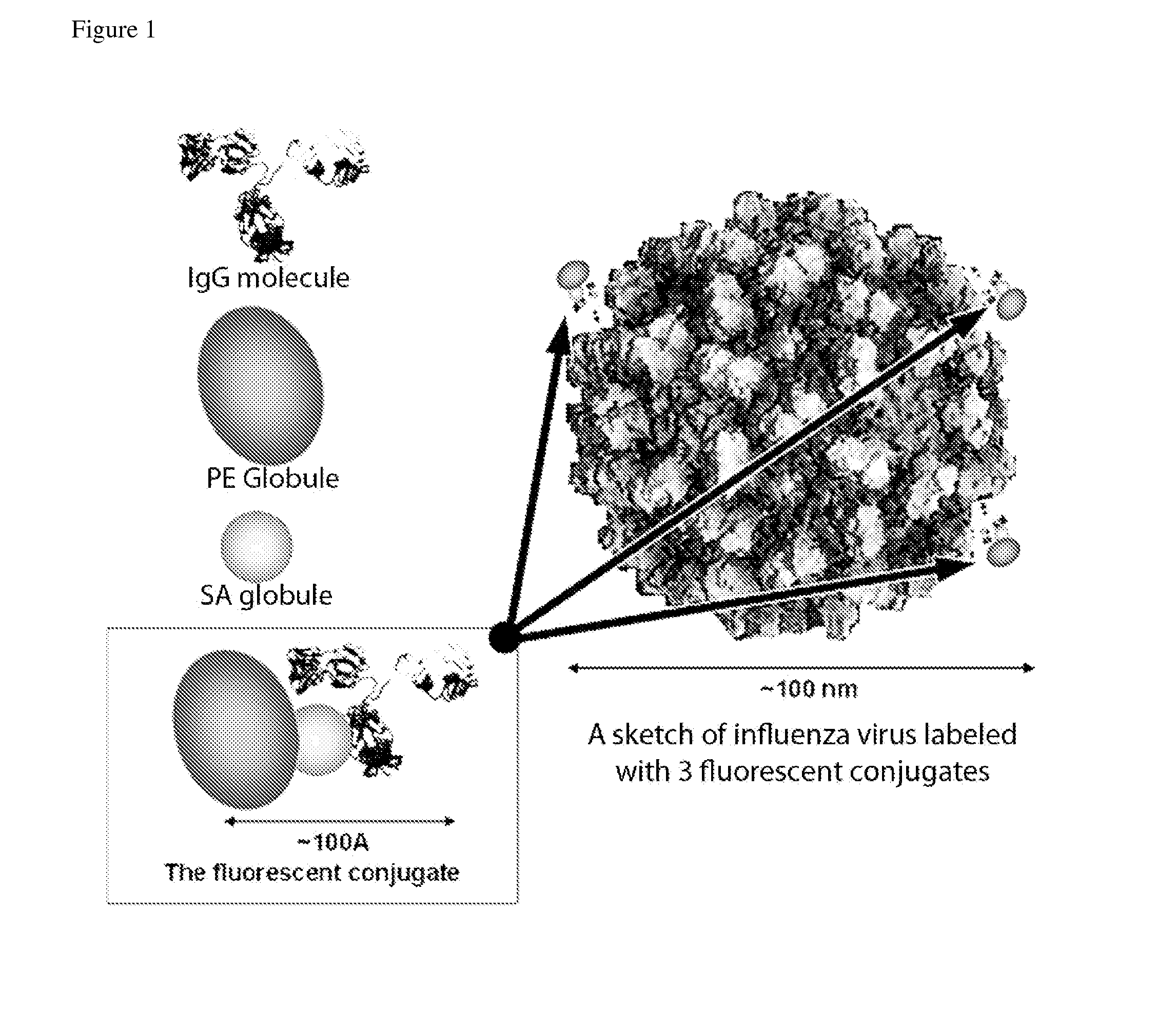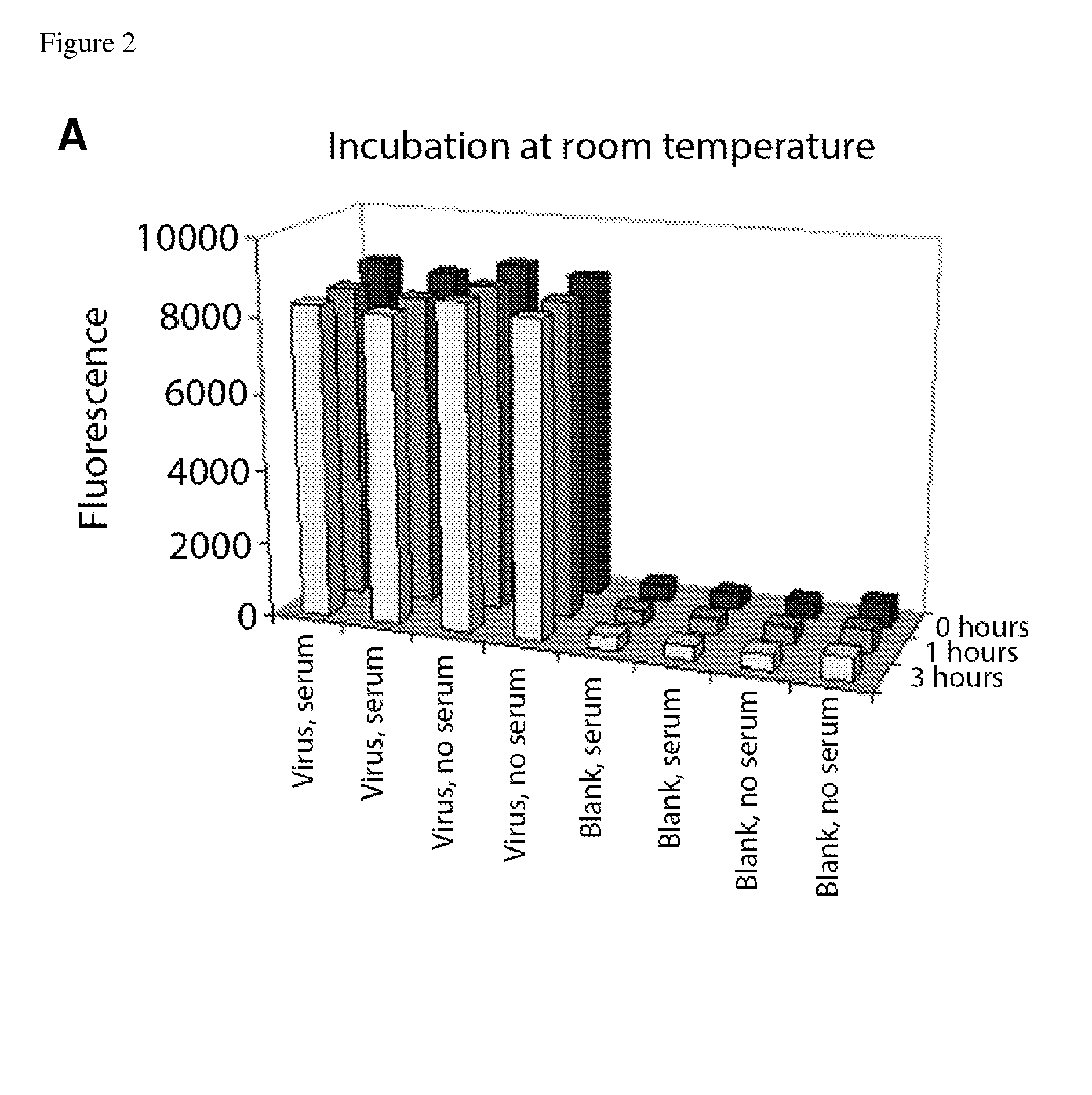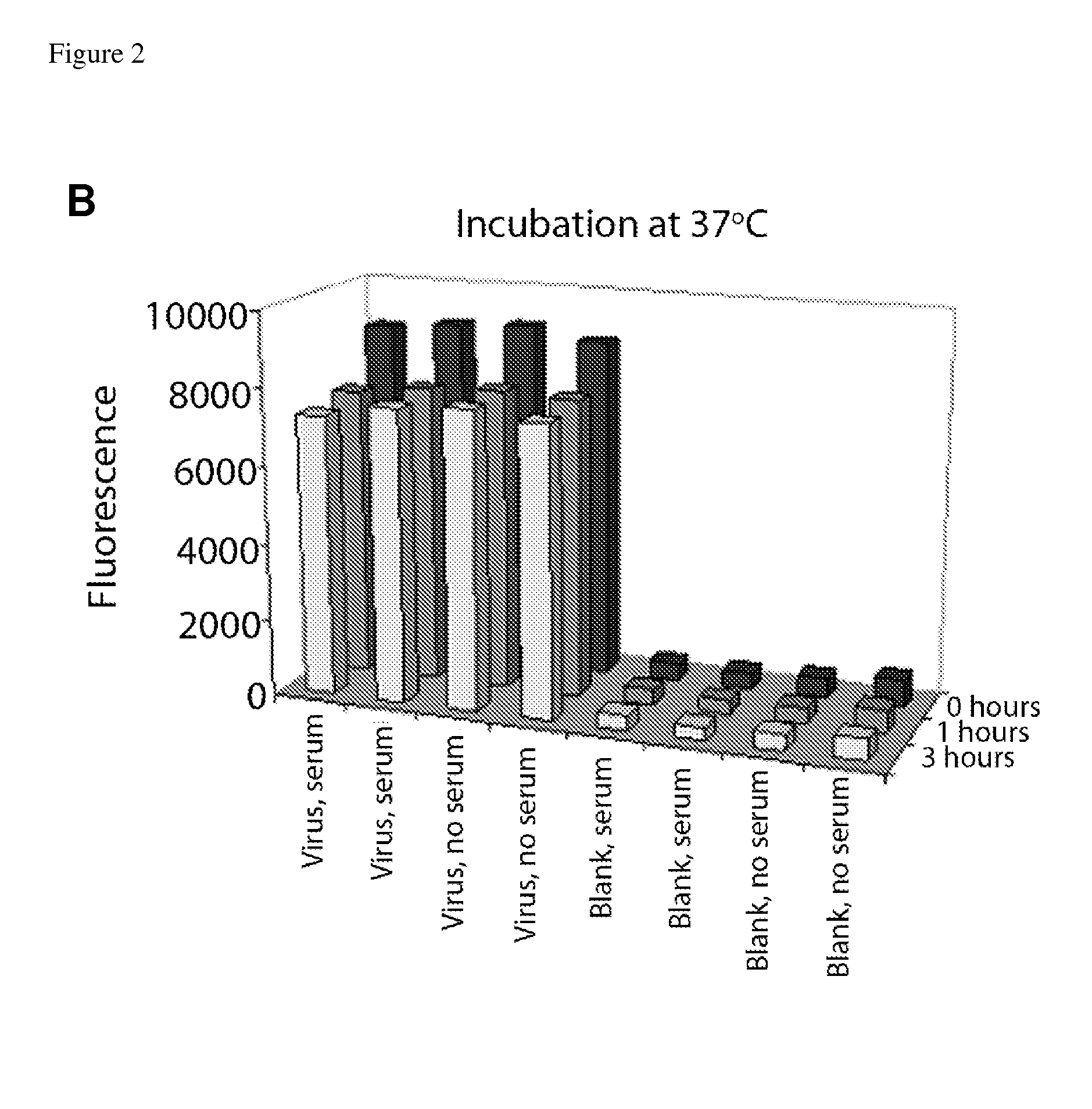Fluorescent neutralization and adherence inhibition assays
a technology of fluorescence neutralization and inhibition assays, applied in biochemistry apparatus and processes, instruments, peptide sources, etc., can solve the problem of increasing the efficiency of quenching surface-bound fluorescence, and achieve the effect of inexpensive assays
- Summary
- Abstract
- Description
- Claims
- Application Information
AI Technical Summary
Benefits of technology
Problems solved by technology
Method used
Image
Examples
example 1
Influenza Virus as a Model for Developing the Neutralization Assay: Affinity Fluorescent Labeling
[0108]BPL-inactivated influenza virus standards of various strains are readily available, for example, from the US Centers for Disease Control and Prevention (CDC). Solomon Islands H1N1, New Caledonia H1N1, and Wisconsin H3N2 strains containing ˜109 viral particles / mL were used in most of the experiments, as examples.
[0109]Experiments were conducted with various labels, including direct biotinylation, quantum dots and fluorescent nanoparticles. Affinity labeling with biotinylated influenza A-specific antibodies with subsequent attachment of the fluorescent streptavidin-phycoerythrin (SA-PE) conjugate provided the brightest labeling of the influenza A virus. Direct biotinylation of the virus also provided an acceptable level of signal.
[0110]It was previously found that the goat polyclonal anti-influenza A H1 specific antibody # 1301 (ViroStat) had a high affinity for H1N1 viruses, but low...
example 2
Assessing Replacement of the Affinity Label by Other Virus-Specific Antibodies
[0115]An important question needed to be addressed before using the described affinity labeling in the neutralization experiments. Testing the neutralizing capacity of a test sera or other fluids requires incubating the labeled virus with a significant excess of other virus-specific antibodies in the tested sample, many of which may be cross-reactive with the viral epitopes recognized by the labeling antibody. It was therefore important to check whether other virus-specific antibodies would displace the labeling antibodies on the virus surface.
[0116]Label replacement tests were performed at the same concentrations, volumes, temperatures, and times of incubation as the prospective neutralization assays (FIG. 2). In the first test, four wells of the ELISA plates were coated with inactivated Solomon Islands virus (“Virus”), and the other four wells were left blank (“Blank”), as negative controls. After blocki...
example 3
Quenching of Surface-Bound Phycoerythrin Fluorescence
[0120]Monitoring fluorescently labeled virus engulfed by target cells inevitably requires subduing the fluorescence of surface-adherent virus. This can be done via extensive protease treatment of the cell surface, or (preferably) quenching of the surface-bound fluorescence using non- or low-fluorescence quenching agents. Trypan blue (TB) and crystal violet have been used successfully to quenching surface-bound fluorescein (Nichols et al. (1993) Arch. Virol. 130, 441; Collins & Buchholz (2005) J. Virol. Meth. 128, 192-197). It was found, however, that these non-specific quenchers were less effective in quenching the fluorescence of phycoerythrin (PE), likely because some of the phycobilin fluorescent clusters of PE are buried deep in the protein globule and inaccessible to the occasional contacts with quenching molecules.
[0121]To achieve more efficient quenching, an “addressed” affinity quencher was prepared, based on anti-PE antib...
PUM
 Login to View More
Login to View More Abstract
Description
Claims
Application Information
 Login to View More
Login to View More - R&D
- Intellectual Property
- Life Sciences
- Materials
- Tech Scout
- Unparalleled Data Quality
- Higher Quality Content
- 60% Fewer Hallucinations
Browse by: Latest US Patents, China's latest patents, Technical Efficacy Thesaurus, Application Domain, Technology Topic, Popular Technical Reports.
© 2025 PatSnap. All rights reserved.Legal|Privacy policy|Modern Slavery Act Transparency Statement|Sitemap|About US| Contact US: help@patsnap.com



